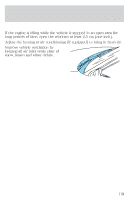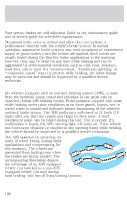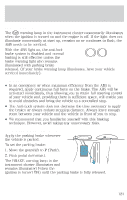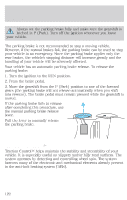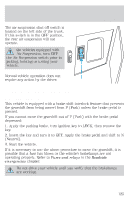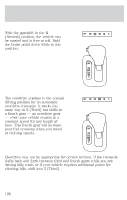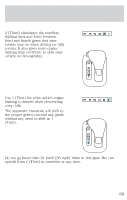1999 Lincoln Continental Owner Guide 1st Printing - Page 124
1999 Lincoln Continental Manual
Page 124 highlights
Driving If the power steering system breaks down (or if the engine is turned off), you can steer the vehicle manually, but it takes more effort. If the steering wanders or pulls, the condition could be caused by any of the following: • underinflated tire(s) on any wheel(s) • high crown in center of road • high crosswinds • wheels out of alignment • loose or worn components in steering linkage Speed sensitive steering The steering in your vehicle is speed sensitive. At high speeds, steering assist will decrease to improve steering feel. At lower speeds, maneuverability will be increased. See Message Center in the Instrumentation chapter. If the amount of effort required to steer your vehicle changes at a constant vehicle speed, have the power steering system checked by your dealer or a qualified service technician. AIR SUSPENSION SYSTEM The air suspension system is designed to improve ride, handling and general vehicle performance during: • certain road conditions • steering maneuvers • braking • accelerations This system keeps the rear of your vehicle at a constant level by automatically adding air or releasing air from the springs. 124




